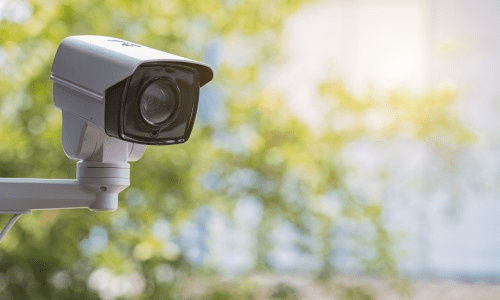
11.26.21 – SSI – Jason Knott
In a nutshell, the integrator can install the surveillance cameras but should avoid discussing the lawfulness of the installation with the client.
It’s one thing for an integrator to set up video surveillance cameras to secure a client’s home and property, but can those same cameras be pointed at the next door neighbor’s house? The short answer is “yes,” but it is one of the more complex situations an integrator may ever face.
In a nutshell, the integrator can install the surveillance cameras but should avoid discussing the lawfulness of the installation with the client because that could expose the dealer to liability. Also, it is advisable to have the client (not you) post notification signs that video and audio recording are taking place.
An integrator posed this complicated situation to security legal expert and SSI columnist Ken Kirschenbaum. The situation involves a customer whose next door neighbor is a “nuisance.” The single-family home, which is in a residential neighborhood, is used to house persons with mental or physical impairments.
Unfortunately, those inhabitants are “terrorizing” the client’s dogs, driving their cars onto their lawn, playing loud music late in the night, and have even knocked down a block wall/fence on the client’s property. The integrator’s customer wants to record the alleged mayhem as evidence for the police regarding enforcement of local ordinances.
So the question arises… is it legal to direct audio recording devices and video surveillance cameras toward the neighbor’s home, and does the integration company hold any liability in this situation?
According to Kirschenbaum, the answer really depends on the state and local laws, which change often. However, in general, the greater potential liability for the integrator could come from the audio recording versus the video surveillance cameras.
“As a general rule, you can do the installation; it’s the customer’s responsibility to use the equipment in a lawful manner,” says Kirschenbaum. “So installing the equipment shouldn’t overly expose you to liability.”
In a twist, Kirschenbaum advises the integrator to not discuss the state or local laws with the clients, because simply doing so could expose the integrator to liability.
“You’re not a lawyer and you have no legal duty to ensure that the systems are used lawfully, though you are not permitted to do an installation that explicitly violates the law,” he says. “Why should you avoid counseling your customer on the law of audio and video? Because when they get into trouble, they are going to blame you. You will find that the law is not particularly clear and the myriad of scenarios can change the outcome on legality and legal exposure easily.”
Customer Should Post Audio Recording/Video Surveillance Camera Notification Signs
In this particular case, which takes place in the state of Arizona, Kirschenbaum says the law advises that the customer should post a sign that indicates that both video and audio are being recorded.
The law states: “Photographing, videotaping, filming or digitally recording for security purposes if notice of the use of photographing, videotaping, filming or digital recording equipment is clearly posted in the location and the location is one in which the person has a reasonable expectation of privacy.”
Kirschenbaum notes, “Obviously, the recordings need to be used in a lawful manner, but turning it over to the property owner or police would qualify for legal use,” he says. Specifically, the Arizona state Criminal Law § 13-3019 regarding audio and video surveillance camera says:
Surreptitious photographing, videotaping, filming or digitally recording or viewing; exemptions; classification; definitions
A. It is unlawful for any person to knowingly photograph, videotape, film, digitally record or by any other means secretly view, with or without a device, another person without that person’s consent under either of the following circumstances:
1. In a restroom, bathroom, locker room, bedroom or other location where the person has a reasonable expectation of privacy and the person is urinating, defecating, dressing, undressing, nude or involved in sexual intercourse or sexual contact.
2. In a manner that directly or indirectly captures or allows the viewing of the person’s genitalia, buttock or female breast, whether clothed or unclothed, that is not otherwise visible to the public.
B. It is unlawful to disclose, display, distribute or publish a photograph, videotape, film or digital recording made in violation of subsection A of this section without the consent or knowledge of the person depicted.
C. This section does not apply to:
1. Photographing, videotaping, filming or digitally recording for security purposes if notice of the use of photographing, videotaping, filming or digital recording equipment is clearly posted in the location and the location is one in which the person has a reasonable expectation of privacy.
2. Photographing, videotaping, filming or digitally recording by correctional officials for security reasons or in connection with the investigation of alleged misconduct of persons on the premises of a jail or prison.
3. Photographing, videotaping, filming or digitally recording by law enforcement officers pursuant to an investigation, which is otherwise lawful.
4. The use of a child monitoring device as defined in section 13-3001.
D. A violation of subsection A or B of this section is a class 5 felony.
E. Notwithstanding subsection D of this section, a violation of subsection A or B of this section that does not involve the use of a device is a class 6 felony, except that a second or subsequent violation of subsection A or B of this section that does not involve the use of a device is a class 5 felony.
F. Notwithstanding subsection D of this section, a violation of subsection B of this section is a class 4 felony if the person depicted is recognizable.
G. For the purposes of this section, “sexual contact” and “sexual intercourse” have the same meanings prescribed in section 13-1401.
This article first appeared on SSI sister site CEPro.com.
